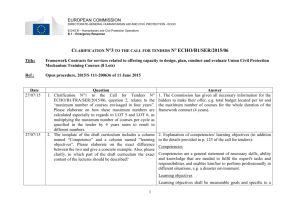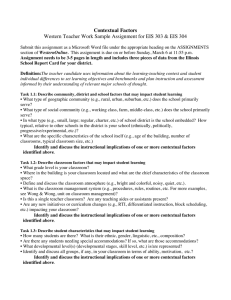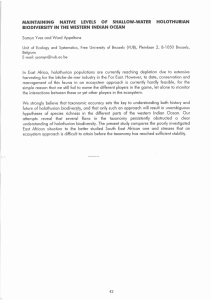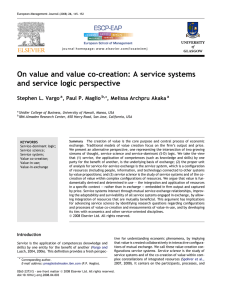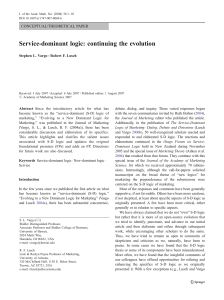The Use of Semantic Network ... Service Ecosystem
advertisement
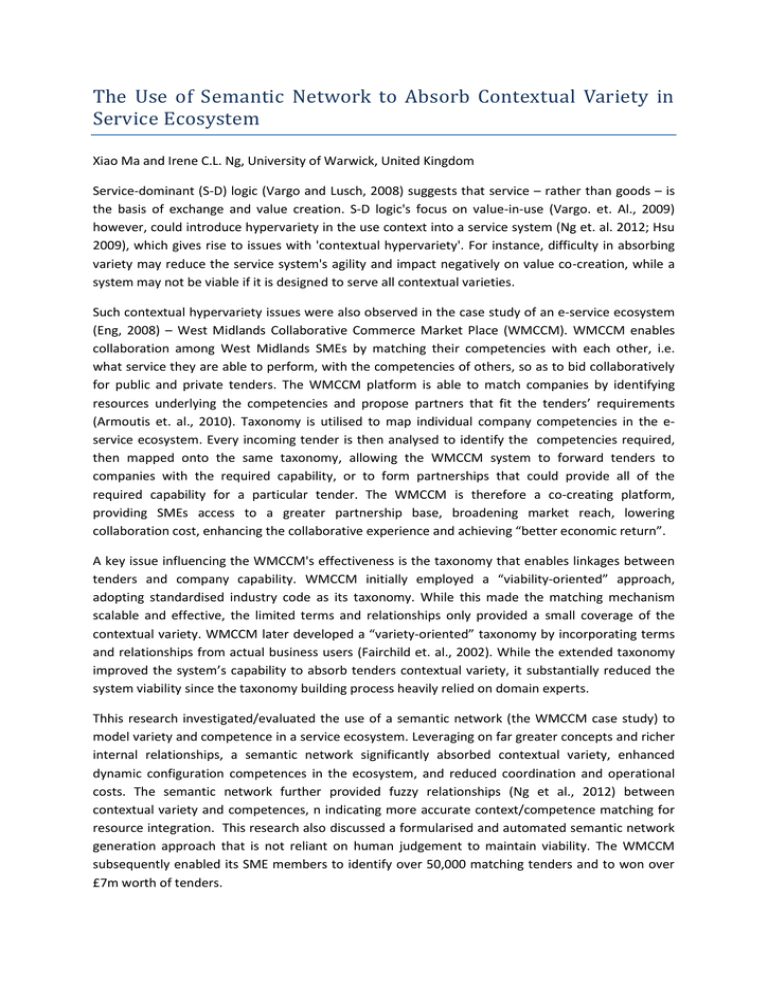
The Use of Semantic Network to Absorb Contextual Variety in Service Ecosystem Xiao Ma and Irene C.L. Ng, University of Warwick, United Kingdom Service-dominant (S-D) logic (Vargo and Lusch, 2008) suggests that service – rather than goods – is the basis of exchange and value creation. S-D logic's focus on value-in-use (Vargo. et. Al., 2009) however, could introduce hypervariety in the use context into a service system (Ng et. al. 2012; Hsu 2009), which gives rise to issues with 'contextual hypervariety'. For instance, difficulty in absorbing variety may reduce the service system's agility and impact negatively on value co-creation, while a system may not be viable if it is designed to serve all contextual varieties. Such contextual hypervariety issues were also observed in the case study of an e-service ecosystem (Eng, 2008) – West Midlands Collaborative Commerce Market Place (WMCCM). WMCCM enables collaboration among West Midlands SMEs by matching their competencies with each other, i.e. what service they are able to perform, with the competencies of others, so as to bid collaboratively for public and private tenders. The WMCCM platform is able to match companies by identifying resources underlying the competencies and propose partners that fit the tenders’ requirements (Armoutis et. al., 2010). Taxonomy is utilised to map individual company competencies in the eservice ecosystem. Every incoming tender is then analysed to identify the competencies required, then mapped onto the same taxonomy, allowing the WMCCM system to forward tenders to companies with the required capability, or to form partnerships that could provide all of the required capability for a particular tender. The WMCCM is therefore a co-creating platform, providing SMEs access to a greater partnership base, broadening market reach, lowering collaboration cost, enhancing the collaborative experience and achieving “better economic return”. A key issue influencing the WMCCM's effectiveness is the taxonomy that enables linkages between tenders and company capability. WMCCM initially employed a “viability-oriented” approach, adopting standardised industry code as its taxonomy. While this made the matching mechanism scalable and effective, the limited terms and relationships only provided a small coverage of the contextual variety. WMCCM later developed a “variety-oriented” taxonomy by incorporating terms and relationships from actual business users (Fairchild et. al., 2002). While the extended taxonomy improved the system’s capability to absorb tenders contextual variety, it substantially reduced the system viability since the taxonomy building process heavily relied on domain experts. Thhis research investigated/evaluated the use of a semantic network (the WMCCM case study) to model variety and competence in a service ecosystem. Leveraging on far greater concepts and richer internal relationships, a semantic network significantly absorbed contextual variety, enhanced dynamic configuration competences in the ecosystem, and reduced coordination and operational costs. The semantic network further provided fuzzy relationships (Ng et al., 2012) between contextual variety and competences, n indicating more accurate context/competence matching for resource integration. This research also discussed a formularised and automated semantic network generation approach that is not reliant on human judgement to maintain viability. The WMCCM subsequently enabled its SME members to identify over 50,000 matching tenders and to won over £7m worth of tenders. References Armoutis, Nikos, Jay Bal, and Mark Swift. "Collaborative Networks through Competence Profiling." In Proceedings of the 13th International Conference on Concurrent Enterprising. 2007. Eng, Teck-Yong. "E-customer service capability and value creation." The Service Industries Journal 28, no. 9 (2008): 1293-1306. Fairchild, Alea M., and Bruno de Vuyst. "Coding standards benefiting product and service information in e-commerce." In System Sciences, 2002. HICSS. Proceedings of the 35th Annual Hawaii International Conference on, pp. 3201-3208. IEEE, 2002. Hsu, C. (2009). Service Science, design for scaling and transformation. Singapore, World Scientific. Ng, Irene C.L., Ralph Badinelli, Francesco Polese, Primiano Di Nauta, Helge Löbler and Sue Halliday (2012) “S-D Logic Research Directions and Opportunities: The Perspective of Systems, Complexity and Engineering”, Marketing Theory, forthcoming Vargo, Stephen L., and Robert F. Lusch. "Why “service”?." Journal of the Academy of marketing Science 36, no. 1 (2008): 25-38. Vargo, Stephen L., and Melissa Archpru Akaka. "Service-dominant logic as a foundation for service science: clarifications." Service Science 1, no. 1 (2009): 32-41

